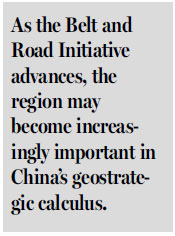Belt and Road will boost ties with Middle East
Judging by the US Energy Information Administration's forecast, China's demand for energy could double by 2030 if its domestic growth and overseas economic activities through the Belt and Road Initiative continue at the current pace. Hence, speculation is rife that China might be a prime bidder for the 5 percent stocks of Saudi Arabian Oil Company (Aramco) which Riyadh has decided to sell to ensure its future energy security.
Over the last two years, China has been expanding its oil imports from Iran, which has the fourth-largest oil reserve in the world. China imports 55 percent of its oil from the Middle East and North Africa. And some observers believe that given its current level of consumption, China could run out of its domestic energy sources in the next 15 years. Assuming this prediction proves correct, China would be even more dependent on the region for its energy security and, therefore, invest more in the political stability and security of the region.

Another factor that is deepening relations between China and the Middle East is the Belt and Road Initiative, which, once fully operational, will see China's greater involvement in the region's economies. One of the six corridors of the Belt and Road Initiative runs from Urumqi in China's Xinjiang Uygur autonomous region through Central Asia, Russia, Iran and Turkey to Europe, which has the potential of substantially boosting trade between China and the countries involved in the initiative. In fact, Chinese investment in many of these countries has risen considerably since 2015.















